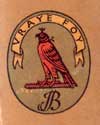Thu 14 Dec 2006
Patenting genes
Posted by boz under Biochemistry , Computing , Molecular Biology , ScienceComments Off on Patenting genes
Google has a great new service: Google Patent Search. I tried “gene sequence” and got back over 1200 hits. This is disturbing on a couple of levels, for example: a patent on the Coding sequences of the human BRCA1 gene.
Two things are big issues here:
- How can the (idiotic?) US Patent office grant patents on what any normal person would call a work of Nature? Didn’t the courts shoot that down? They should. This isn’t an “invention”, it’s a discovery of something Nature has done.
- The above patent (and others like it) are also a concern, since mutations to the BRCA1 gene are linked to human ovarian and breast cancer. Thus, patenting the sequence prevents production of generic techniques for detecting such mutations. The patent does also include specific techniques for detecting mutations. I don’t have a problem with patenting certain techniques – but there is a fine line. Patenting the *sequence* crosses it, though.
Somebody needs to give the USPTO a wakeup call.
